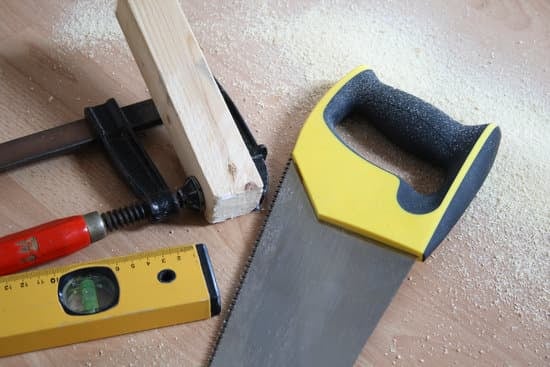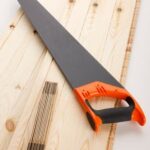Are you considering making improvements to your home but are unsure of the best financing option? One common question that homeowners have is, “Is a home improvement loan a second mortgage?” In this article, we will explore the differences between these two types of financing and help you make an informed decision for your home improvement project.
A home improvement loan is a type of loan specifically designed to fund renovations, repairs, or remodeling projects for your home. On the other hand, a second mortgage is a separate loan taken out against the equity in your home, which can also be used for various purposes, including home improvements. While both options can provide the funds needed for your project, it’s essential to understand how they differ and what each entails.
Understanding the key differences between these two financing options is crucial in determining which one may be more suitable for your specific needs. From eligibility criteria to potential risks and benefits, we will delve into the pros and cons of utilizing a home improvement loan versus a second mortgage. By exploring these aspects, you’ll gain valuable insights into choosing the right option for financing your home improvement goals.
Key Differences Between Home Improvement Loan and Second Mortgage
When considering financing options for home improvements, it’s important to understand the key differences between a home improvement loan and a second mortgage. While both can provide the funds needed to make upgrades to your home, they are structured differently and have varying implications for homeowners.
First and foremost, a home improvement loan is a type of personal loan that is specifically intended for funding renovation or repair projects. This type of loan is unsecured, meaning it does not require any collateral such as your home or other property.
On the other hand, a second mortgage involves using the equity in your home as collateral to secure a loan. This means that if you default on the loan, the lender has the right to foreclose on your property in order to recoup their losses.
Another key difference between the two options is the interest rates and terms. Home improvement loans typically have fixed interest rates and set repayment periods, providing borrowers with predictability in their monthly payments. Second mortgages, on the other hand, may have variable interest rates and longer repayment terms, which could result in fluctuating payments over time.
Additionally, when considering whether to utilize a home improvement loan or a second mortgage for your project, it’s crucial to consider your financial situation and long-term goals. A home improvement loan may be more suitable for smaller renovation projects that don’t require tapping into your home’s equity, while a second mortgage might be more appropriate for larger-scale renovations that necessitate substantial funding over an extended period.
Ultimately, understanding these key differences will enable homeowners to make an informed decision about which financing option best suits their specific needs and circumstances. It is essential to carefully weigh the pros and cons of each option before proceeding with any financing decision for home improvements.
Pros and Cons of Utilizing a Home Improvement Loan
When it comes to financing home improvement projects, many homeowners often consider taking out a home improvement loan. This type of loan is specifically designed to cover the costs of renovations, upgrades, and repairs for your home. Before making a decision, it’s important to weigh the pros and cons of utilizing a home improvement loan.
Pros of Utilizing a Home Improvement Loan:
– Fixed interest rates: Home improvement loans typically come with fixed interest rates, which means your monthly payments will remain the same throughout the loan term.
– No equity required: Unlike second mortgages, home improvement loans do not require you to use your home as collateral, making it a less risky option for homeowners.
– Flexible loan terms: Many lenders offer flexible repayment terms for home improvement loans, allowing you to choose a timeframe that works for your budget.
Cons of Utilizing a Home Improvement Loan:
1. Lower borrowing limits: Compared to second mortgages, home improvement loans may have lower borrowing limits, which could limit the scope of your renovation project.
2. Closing costs and fees: Some lenders may charge origination fees or closing costs for home improvement loans, adding to the overall cost of borrowing.
3. Potentially higher interest rates: While some home improvement loans offer competitive rates, others may come with higher interest rates compared to second mortgages.
Pros and Cons of Utilizing a Second Mortgage for Home Improvements
A second mortgage is a loan that uses your home as collateral, just like your primary mortgage. It is a way to tap into the equity you’ve built up in your home and borrow against it. While this can be a convenient way to access funds for home improvements, there are both pros and cons to consider before utilizing a second mortgage for this purpose.
One of the main advantages of using a second mortgage for home improvements is that you can typically borrow larger amounts of money compared to other types of loans. This means you may have more flexibility to fund big renovation projects or repairs. Additionally, the interest rates on second mortgages can be lower than other types of unsecured loans, making it a potentially cost-effective option for financing your home improvement needs.
However, there are also drawbacks to consider. When you take out a second mortgage, you are essentially taking on more debt and putting your home at risk if you are unable to make the required payments. Additionally, there are fees associated with obtaining a second mortgage, such as closing costs and appraisal fees, which can add to the overall cost of borrowing.
Another important factor to consider when using a second mortgage for home improvements is the impact it may have on your credit score. Taking on additional debt could potentially lower your credit score, making it more difficult or expensive to obtain financing in the future. It’s important to carefully weigh these pros and cons before deciding if a second mortgage is the right choice for your home improvement project.
Eligibility Criteria for Home Improvement Loans and Second Mortgages
When considering home improvement financing options, it is crucial to understand the eligibility criteria for both home improvement loans and second mortgages. Eligibility criteria can vary depending on the lender, the type of loan, and the borrower’s financial situation.
For home improvement loans, eligibility criteria typically include a credit score of at least 620, a stable income, and a debt-to-income ratio that meets the lender’s requirements. Some lenders may also require a certain amount of equity in the home to qualify for a home improvement loan. Additionally, borrowers may need to provide documentation such as proof of income, employment verification, and a detailed project plan outlining how the funds will be used.
On the other hand, second mortgages have their own set of eligibility criteria. These may include a minimum credit score, sufficient equity in the home (usually at least 20%), and a low debt-to-income ratio. Lenders may also consider factors such as the borrower’s employment history, assets, and overall financial stability when determining eligibility for a second mortgage.
It is important to note that while both home improvement loans and second mortgages share some common eligibility criteria such as credit score and equity requirements, they are distinct financing options with unique qualification standards. Understanding these criteria is essential in choosing the right option for your specific home improvement needs. So is a home improvement loan a second mortgage? The answer lies within the specific requirements set by lenders for each type of financing option.
How to Choose the Right Option for Your Home Improvement Project
When it comes to financing your home improvement project, choosing the right option is essential for ensuring that you can complete the renovations without straining your finances. There are several factors to consider when deciding between a home improvement loan and a second mortgage.
Assess Your Financial Situation
Before making a decision, take a close look at your current financial situation. Consider factors such as your income, existing debt, credit score, and overall budget for the home improvement project. Understanding where you stand financially will help you determine which financing option is more suitable for your needs.
Evaluate the Scope of Your Project
Next, evaluate the scope of your home improvement project. Are you planning minor renovations or a major overhaul? The size and cost of the project will play a significant role in determining whether a home improvement loan or a second mortgage is the better choice. For smaller projects, a home improvement loan might be sufficient, while larger projects may require the use of a second mortgage to access more funds.
Consider Long-Term Financial Impact
It’s important to consider the long-term financial impact of each option. A home improvement loan typically has a fixed interest rate and repayment terms, making it easier to budget for. On the other hand, a second mortgage often comes with variable interest rates and could potentially increase your overall debt burden. Think about how each option will affect your finances not just in the short term, but also in the years to come.
Understanding the Risks Associated With Second Mortgages
When considering a second mortgage as a potential option for funding home improvement projects, it is important to fully understand the associated risks. While a second mortgage can provide access to a large sum of money for renovations or repairs, it comes with its own set of potential drawbacks that borrowers should carefully consider.
Increased Debt Burden
One of the primary risks associated with taking out a second mortgage is the increased debt burden on the homeowner. By leveraging the equity in their home, borrowers are essentially taking on additional debt that must be repaid in addition to their original mortgage. This can result in higher monthly payments and potentially strain the homeowner’s finances.
Risk of Foreclosure
Taking out a second mortgage means that the borrower’s home serves as collateral for the loan. In the event that the borrower defaults on their payments, they run the risk of foreclosure, meaning they could lose their home. This risk is significantly higher with a second mortgage compared to other forms of financing, such as personal loans or home equity lines of credit.
Interest Rate Fluctuations
Another risk associated with second mortgages is the potential for interest rate fluctuations. Since these loans typically have variable interest rates, borrowers may face unexpected increases in their monthly payments if interest rates rise. This can make it challenging to budget for home improvements and may result in financial strain for the homeowner.
In summary, while a second mortgage can provide convenient access to funds for home improvement projects, it comes with inherent risks such as increased debt burden, the potential for foreclosure, and interest rate fluctuations. Homeowners should carefully weigh these risks against the benefits before deciding whether a second mortgage is the right choice for their financing needs.
Concluding Thoughts
In conclusion, when it comes to financing your home improvement project, it is important to carefully weigh the options of a home improvement loan versus a second mortgage. While a home improvement loan provides a specific sum of money for renovations and upgrades, a second mortgage allows homeowners to borrow against the equity in their homes. The key to making an informed decision lies in understanding the differences between these two financing options.
One of the main advantages of utilizing a home improvement loan is that it does not put your home at risk of foreclosure, as it is typically an unsecured personal loan. Additionally, home improvement loans often come with fixed interest rates and predictable monthly payments, making budgeting for your project much easier.
On the other hand, a second mortgage may offer lower interest rates and longer repayment terms, but it does put your home at risk if you are unable to make payments on the loan.
Ultimately, the decision on whether to choose a home improvement loan or a second mortgage will depend on your individual financial situation and long-term goals. It is important to thoroughly assess your eligibility for each option and consider any potential risks associated with borrowing against the equity in your home. By weighing the pros and cons of each financing avenue, you can make an informed decision that meets your specific needs for funding your home improvement project.
Frequently Asked Questions
What Is Considered a Second Mortgage?
A second mortgage is a loan that is secured by the value of your home, just like your primary mortgage. It’s called a “second” because it comes after your first mortgage in terms of priority for repayment.
Are Home Improvement Loans and Home Equity Loans the Same?
Home improvement loans and home equity loans are not the same. A home improvement loan is specifically designed to fund renovations and upgrades to your home, while a home equity loan allows you to borrow against the equity you’ve built up in your home for any purpose.
What Is a Home Improvement Loan Called?
A home improvement loan is also known as a renovation loan or a remodel loan. These loans are intended to provide funding specifically for making improvements to your home, such as adding a new room, upgrading the kitchen, or installing solar panels.

I’m thrilled to have you here as a part of the Remodeling Top community. This is where my journey as an architect and remodeling enthusiast intersects with your passion for transforming houses into dream homes.





